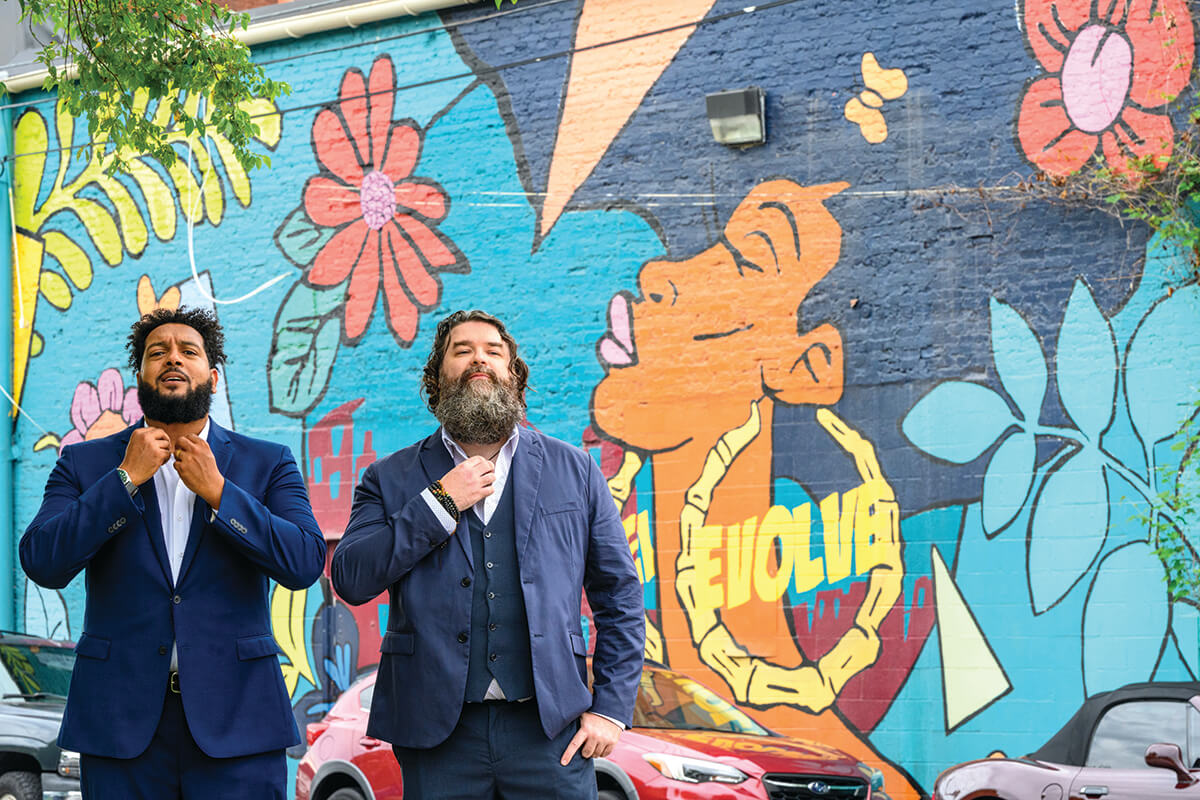COVID-19
Get to Know the Baltimore City Health Department’s Dynamic Social Media Duo
Using memes, GIFs, and evocative infographics, the duo aims to combat COVID misinformation and boost vaccinations.

For Adam Abadir, beginning his new job just weeks before the arrival of COVID-19 was like a rookie athlete being thrown into the World Series.
“If I had known a pandemic was on the horizon,” he quips, “I probably would have at least changed my salary request.”
Ironically, a year and a half later, Abadir, communications director for the Baltimore City Health Department—with contract graphic designer Benjamin Jancewicz—has created a campaign that’s become, well, viral.
Using memes, GIFs, and evocative infographics, the duo’s clever initiative to both combat COVID misinformation and boost vaccinations has not only garnered national acclaim but also changed the status quo for how health departments interact with their residents in the age of social media. The zany graphics are meant to turn often insipid harm-reduction messages into something “a little bit funny, kind of quirky, and sort of subversive,” says Abadir.
Enter “MIMOSAS WITH THE GIRLS? YOU STILL AREN’T VAXXED, DEBRA!” That was one of Jancewicz’s first offerings, which features a generic stock image of an antagonized man arguing with a brow-furrowed woman. “I laughed when I saw it,” recalls Abadir, and the internet did, too.
The meme became one of their early hits on social media, particularly via the department’s Twitter account, @BMore_Healthy. Encouraged by its success, they went on to create “Salad Connor,” “Ginger Ale Derrick,” and “Green Tea Trina,” sending the message that: no, none of those “healthy” things cure COVID. They have since garnered tens of thousands of likes, thousands of comments, and shoutouts from major news outlets including the BBC, NPR, and The Washington Post.
The inspiration for each meme comes from feedback via the department’s frontline staff, from community ambassadors to infectious disease specialists. (In the case of “Mimosa Debra,” for instance, contact tracers had noticed an uptick in unvaccinated people contracting the virus over brunch.) And each message is fact-checked and vetted before being unleashed into the world.
Despite drawing much attention to their campaign, the guys behind the memes want to remind people that they are just a tiny part of what the country’s oldest continuously running health department has to offer, with some 800 employees, from school nurses to environmental enforcement officers, working to keep the city safe.
“The Baltimore City Health Department is staffed by some of the smartest people in the world,” says Abadir. “We are much more than just memes.”